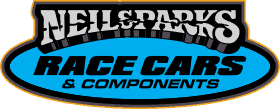Please read instructions thoroughly before attempting installation of the Neil and Parks Front Spindles.
WARNING: All components are shipped assembled for illustration purposes only.
IT IS YOUR RESPONSIBILITY FOR FINAL ASSEMBLY.
IT IS YOUR RESPONSIBILITY FOR FINAL ASSEMBLY.
Tools Needed
- 11/16" Hand reamer or rigid hand hone if new construction. Reamers are available from N&P or any industrial supply.
- 1- 5/16" 12 point Wrench
- 1- 1/8" Allen wrench
- 1/4-20 Tap with cutting oil
- Grease
- Red Loctite
- Tig welder with competent operator; for new construction only
Parts List
- Qty 2 - N&P Spindles, with bushings installed and honed to size
- Qty 2 - Tow cap(s)
- Qty 2 - Steering arms, unless you purchased a third
- Qty 16 - 1/4-28 x 5/8 12 point bolts
- Qty 4 - 1/4-20 x 5/16 set screws
- Qty 2 - Kingpin bosses
- Qty 2 - Kingpins
- Qty 2 - 5/8-18 half nylocks
- Qty 2 - 1/8" cotter pins
Instructions
- For new construction only. If installation is on an existing car, skip to step 3: Prepare your tube axle/a-arm for the fitment of the king pin boss. King pin boss is readily put into an 1 1/4" notch, at 8 degrees from vertical. Consult your chassis builder for proper caster angle. Tip: Spindle centerline is the same height as the center of the kingpin boss for calculating ride height.
- Weld in the kingpin boss with it held in a front end fixture, and let it cool. Then, run the 1/4-20 tap through the setscrew holes, and ream or hone the bore to 11/16". Don't use a die grinder, it will most likely ruin the boss.
- Check fitment of the kingpin in the boss. Also check the angle of kingpin inclination. The N&P spindles are 8 degrees, the same as most others, but there are a few weirdoes. The kingpin should slide through with little effort, but be snug at the same time. If this is not achievable, you will have to remove the old boss, and weld on the supplied ones. Dry fit the spindle onto the boss. There should be little vertical movement. If this is a retro-fit to an existing boss, a spacer may be necessary. Spacers are available from Neil and Parks, call with your needs.
- Grease the inside of the boss, for corrosion purposes, and grease the inside of the bushings and the faces of the bushings. This is the only opportunity for the spindle to get grease. The next time you want to grease it, you will have to take the spindles off the car and repeat this process.
- Slide the kingpin through the top spindle bushing, through the kingpin boss, and through the lower spindle bushing. There are two flats cut into the kingpin, these are supposed to line up with the setscrew holes in the boss. If this is a retrofit to an older car, and the flats do not line up with the setscrews, grind flats in the appropriate location the same depth as the existing ones. If you choose not to make these flats, good luck getting the kingpin out for service.
- Use some red Loctite on the setscrews and install the setscrews into the kingpin boss and tighten the screws, binding the kingpin to the boss to eliminate play. When you have to remove the setscrews, heat them up with a propane torch, and the Loctite will somewhat dissolve, letting you remove them easier. Tip: If your kingpin bushings appear to be worn out, check these setscrews. 9 times out of 10, it will just be loose screws.
- Using more red Loctite, install the tow cap(s) and steering arms with the 1/4-28 x 5/8 12 point bolts. Tighten firmly. Don't overdo the Loctite, as it will run down into the bushings and lock up the spindle. However, use enough to accomplish something.
- Install the wheel and lube the bearings as needed. Snug the 5/8" nylocks to the point where wheel end play is eliminated; basically creating a zero preload situation. This goes for both tapered bearings and ball bearings. Then install the cotter pin on the outside of the nylocks. The nylocks should never move, but if it does, the cotter pin is a safety and will keep the wheel on the car.
- Check the toe-in. It should be 1/16"-1/4". Periodically check all fasteners on your race car for tightness, and condition. If it needs attention, do it. Also, check all components for cracks, bends, etc. A little preventative maintenance will increase your safety level.
If you have any questions please call 785-422-8722.
